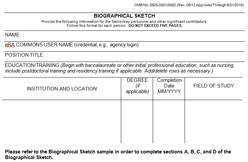I’m pleased to announce that NIGMS is the new home for the Science Education Partnership Awards (SEPA). These awards, which were transferred from NIH’s Division of Program Coordination, Planning, and Strategic Initiatives, support research and educational activities that complement other workforce diversity and training programs within NIH mission areas. The change will allow the SEPA program to be better integrated with other NIGMS capacity-building and research training programs and will increase opportunities for synergies between them.
The SEPA program promotes partnerships between biomedical and clinical researchers and pre-kindergarten to grade 12 teachers and schools, museums and science centers, and other educational organizations. In addition, the program provides students from underserved communities with opportunities to learn about research careers; supplies teachers with professional development in science content and teaching skills; and improves community health and science literacy through its science centers and museum exhibits.
SEPA will be housed in our Center for Research Capacity Building (CRCB), which supports research, research training, faculty development and research infrastructure improvements in states that historically have not received significant levels of research funding from NIH. It also supports faculty research development at institutions that have a historical mission focused on serving students from underrepresented groups.
We do not plan to alter the mission or goals of SEPA as a result of the transfer, and the program will continue to be administered by Tony Beck, who has served as its program director since 2001.
If you have any questions about the transfer, please contact Tony Beck or Fred Taylor, acting director of CRCB.



 on YouTube.
on YouTube.